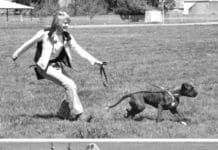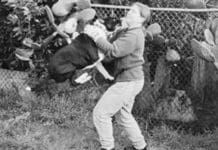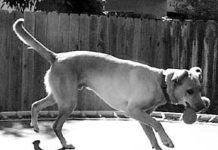Solve Fence Aggression with a Better Dog Fence
As dog owners become more and more responsible about keeping their dogs safe at home, the incidence of fence-related behavior problems rises. Even the unfortunately popular underground electronic (shock) containment system fences can give rise to the problem. The barrier is there, even if the dog can't see it, and the intense punishment of the shock the dog receives if he breaches the invisible barrier can intensify the resulting aggression.
Understanding Destructive Dog Behavior
these activities relieve her boredom and anxiety at being home alone.üDogs don't know it's "bad" to dig up the planters or get in the garbage
Dog Mounting and Dog Dominance Behavior
using a short leash or tether to prevent the dog from greeting the person unless he's politely sitting down."
Avoiding Potential Dog Attacks
There are many reasons a person might tend to look the other way when confronted with a potentially dangerous dog. You may be busy; you may be fearful of the dog's owner or potential retaliation; you may be friends with the owner and reluctant to cause hard feelings between you; you may worry about being responsible for the dog's impoundment and possible euthanasia; or you may simply feel that it's none of your business.
Teach Your Dog to Focus On Cue!
Teaching your dog to focus on you (on cue!) is a vitally useful skill – and not that difficult if you follow our step-by-step directions.
Dog Appeasing Pheromone to Calm Anxious Canine
Our review of a plug-in atomizer that dispenses a “dog appeasing pheromone” to calm especially anxious canines. According to its maker, DAP is supposed to mimic a natural stress-reducing hormone produced by mother dogs while nursing their puppies. It purportedly stops or reduces stress-related barking, urination and defecation, whimpering and whining, anxiety, fear, chewing, and other stress-related behaviors.
Causes of Reactive Dog Behavior and How to Train A Reactive Dog
“Reactive” is a term gaining popularity in dog training circles – but what is it, exactly? In her book Clinical Behavioral Medicine for Small Animals, Applied Animal Behaviorist Karen Overall, M.A., V.M.D., Ph.D., uses the term to describe animals who respond to normal stimuli with an abnormal (higher-than-normal) level of intensity. Take a deep breath and relax. We have positive training solutions for dogs who "go off" or "lose it" in certain circumstances.
Can Dogs Have ADHD?
dogs who display this syndrome can excel at "jobs" requiring activity and/or quick responses
Dogs are Body Language Communicators
Dogs are, first and foremost, body language communicators. While they do have a limited ability to communicate vocally, they are much more articulate with their subtle body movements, and much more intuitively able to understand ours. As Patricia McConnell says in the introduction of her excellent book, The Other End of the Leash, All dogs are brilliant at perceiving the slightest movement that we make
The Canine Predatory Instinct
given the chance. Blocking the dog's view will help.
Is Your Dog Spoiled?
however
Electric Dog Fences: Are They Safe?
One rainy day afternoon that week, upon arriving home, Darren Ashby, an electronic engineer, sent his oldest son out to the pen to take Rufus for a walk. The boy came back in and said Rufus wouldn't let the boy get near him. Dad went out to help, and was horrified by what he found. What I saw made me sick
















